Excerpts from Jim Conrad's
Naturalist Newsletter
from the August 30, 2018 Newsletter issued from Rancho Regenesis in the woods ±4kms west of Ek Balam Ruins; elevation ~40m (~130 ft), N~20.876°, W~88.170°; central Yucatán, MÉXICO
MANDEVILLA VINE FLOWERING
It's amazing that after all these years in the Yucatan I can still be wandering along a trail I've traveled many times, and something completely new to me will turn up, and often it's conspicuous and pretty. That's the case with what's shown below:

It was a slender vine with leaves situated opposite one another, and when a leaf was injured it bled milky white latex. Therefore, it just had to be a member of the big Dogbane or Oleander Family, the Apocynaceae, which now embraces species that used to belong to the now-abolished Milkweed Family. Below, a side view of the flower shows a surprising amount of hairiness
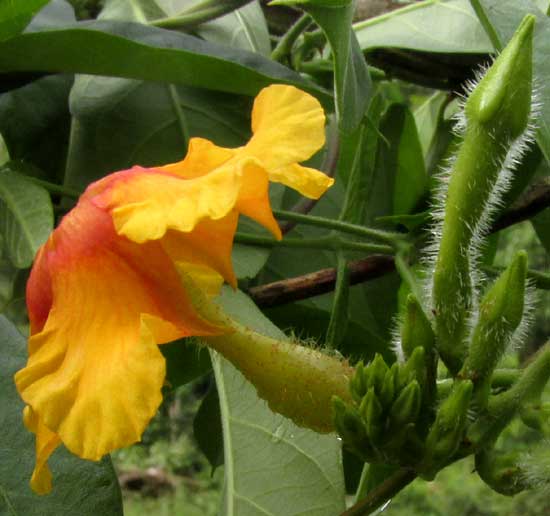
A broken-open flower displays not only droplets of white latex oozing from the torn parts but also, at the entrance to the corolla's throat, a cluster of five anthers on very short filaments, assuring that any pollinator leaving the nectar area at the flower's bottom will be carrying pollen to the next flower. That's below:
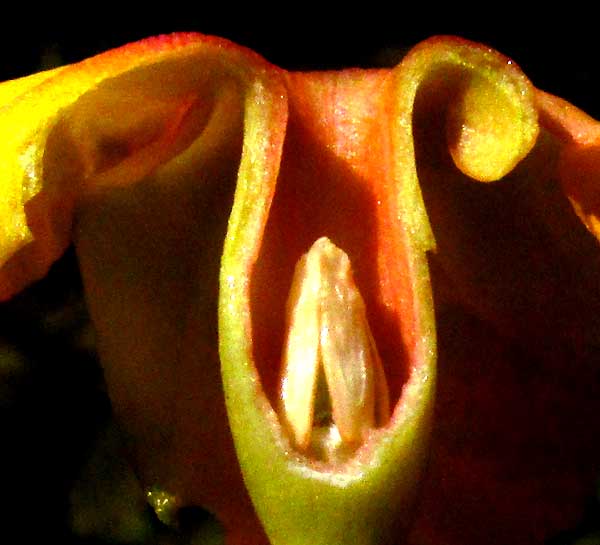
This is MANDEVILLA SUBSAGITTATA, of which there are few pictures and little information on the Internet, despite the species being widely distributed from central Mexico south through Central America into South America. I find no English name for it, but up North certain species of Mandevilla vines are grown in gardens for their pretty flowers, so just calling it Mandevilla might do.
I read that the species is medicinal, but it's not said for what. In many traditional cultures, plants producing white latex are considered eye medicine because of the belief that plants tell us their uses -- the "Doctrine of Signatures." The white latex is like the opaqueness of certain blind people's eyes, so it must be good for eye diseases, they reason. But many members of the Euphorbia Family, for instance, produce white latex, and that sap often contains powerful alkaloids that can damage eyes.
from the March 15, 2019 Newsletter issued from Rancho Regenesis in the woods ±4kms west of Ek Balam Ruins; elevation ~40m (~130 ft), N20.876°, W88.170°; north-central Yucatán, MÉXICO
STRANGE FRUITS OF MANDEVILLA SUBSAGITTATA
Down in the abandoned papaya orchard, about 25ft up a tree (8m), something new and somewhat weird looking turned up dangling from a dry-season-leafless branch, as shown below:
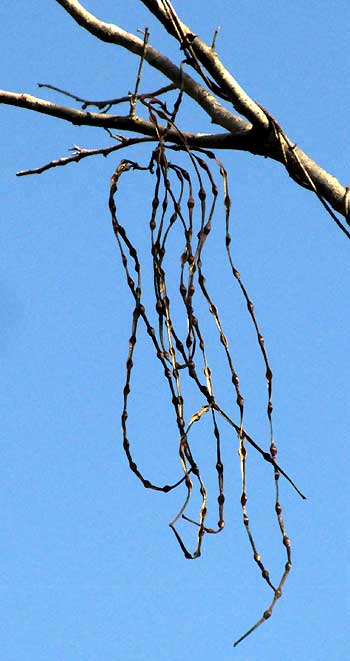
At first I thought it was a disease-caused witch's broom, but the swollen nodes along the dangling items seemed too regularly spaced for that. With the telephoto lens a picture was taken, then later on the computer enlarged, so that certain interesting details showed up, as seen below:
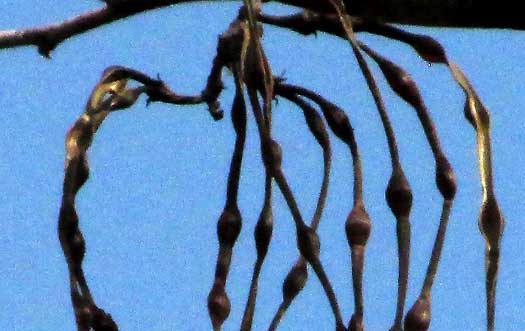
Notice that each dangling thing is one of a pair arising from a common base. I interpreted this as double fruits issuing from a dried-up calyx of an earlier flower containing two pistils. When such a configuration is encountered, the first plant family to come to mind should be the big Dogbane or Oleander Family, the Apocynaceae, which produces many vines that might twine into a treetop. Moreover, in the picture, notice that at the far right the fruit is splitting lengthwise to reveal something cottony white. In the Apocynaceae, often seeds are wind-dispersed by means of long, white, feathery hairs atop them behaving like parachutes, so we must be seeing that. Higher up some older fruits already had released their seeds, plus a few green leaves were visible, shown below:
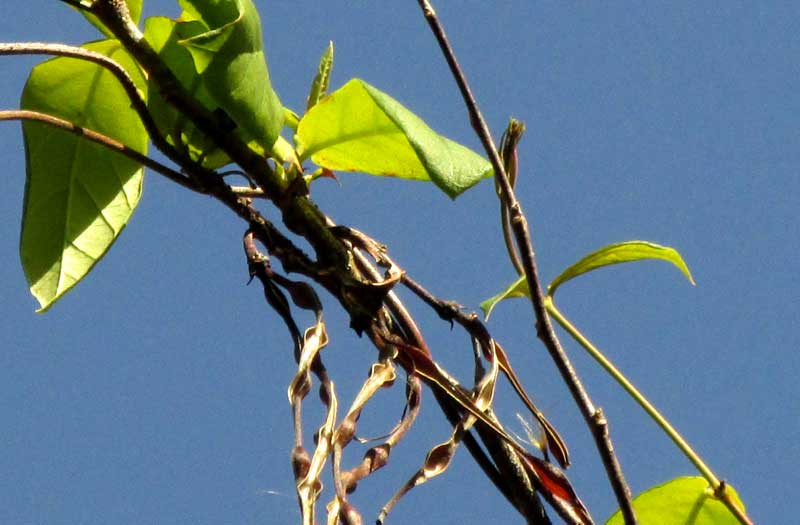
There, the right-most fruit contains a seed ready to fly away. Here we can easier interpret the fruits' swollen nodes as holding seed bodies, while the white hairs were cramped into the narrow parts.
In that picture it wasn't clear whether the leaves belonged to the vine or the otherwise leafless tree. However, they looked identical to leaves on a viny member of the Apocynaceae we've already look at here, when flowering, what I call the Yucatan Echites, Echites yucatenensis*.
*UPDATE: In 2024 when many more resources are available on the Internet, I upload these fruit pictures to iNaturalist, where user "leonardoac," who studies Mexican Apocynaceae, recognizes these fruits belong to Mandevilla subsagittata, which also produces leaves looking like those in the picture, and which grows commonly in this area.